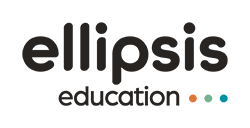
Imagine you just completed a computer science lesson with your students. They were engaged. They were excited. They even wanted to continue working on it after school. But when your students sat down to a computer, they realized it didn’t have the software necessary to access their project.
That is why access is an important consideration when developing your STEM curriculum. In an ideal world, students can explore computer science at home, at the library, or anywhere else they can log in to a computer. Here are three completely open source development platforms that are fun, interactive, and encourage your students’ continued interest in coding.

Are your students interested in creating their own video games? Using a programming language similar to Python, Godot enables coders to create both 2D and 3D games. The Godot community is robust, and there are many resources at your disposal for teaching tech. For example, Godot Learn features documents that help you better understand the platform. The Godot Showcase spotlights games created on the engine that your students can download and play.
Godot was recently awarded a $50,000 grant from the Mozilla Open Source Support Program, so the engine can better support your students as they create the next great game!

You’ve probably already heard of Scratch, a block-coding platform developed by the MIT Media Lab. Perfect for beginners, Scratch allows coders to create stories, games, and animations with drag and drop coding blocks. Students can manipulate the images Scratch provides, or draw and upload their own. This creates a highly customizable experience for coders of all levels and ages.
Scratch has an active community of creators that share their original projects on the platform. If you want a jumping-off point, however, Scratch Activity Guides walk through fun and popular activities to get you started.

Brackets is a free text-editor created by Adobe. Students can create web projects in multiple coding languages, including HTML, CSS, JavaScript, and PHP. Brackets features visual tools to hint and prompt, making the coding process seamless and fun. It also includes a live preview feature that allows students to monitor the progress of their project without publishing it.
These three open source coding platforms are great ways to incorporate technology into your classroom. The learning and community features could provide great inspiration for your CS program. When you are ready to implement a more holistic computer science curriculum, Codelicious provides courses that include activities for each of these platforms:
Explore our coding curriculum pathway to learn more about our computer science courses.